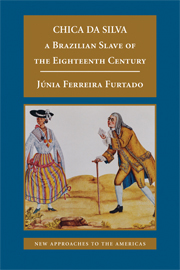The Invitation That Never Came: Mary Seacole After the Crimea
History Today
Volume 55, Issue 2 (2005)
Helen Rappaport
Helen Rappaport on Queen Victoria, Florence Nightingale and the Post-Crimean War reputation of the woman recently voted ‘greatest black Briton’: Mary Seacole.
In the summer of 1856, after the last British troops had made their weary journey home from the Crimea at the end of hostilities, there were numerous public celebrations to mark the end of what had been a bitter and difficult campaign. Among those welcomed back was a stout, middle-aged Jamaican widow, whose familiar nom de guerre – ‘Mother Seacole’–had become legendary during the sixteen months she had been in the Crimea. But it wasn’t just the troops who held her in high regard; their families too had come to hear of her exploits—as nurse, cook and sutler—in all the newspapers. Mary Seacole (c.1805-81) was by no means unique in her native skills as a nurse and doctress. She came from a long line of Creole women trained in the herbal arts, many of whom had been integral to the care of sick slaves on the British plantations. Traditional, too, was the combination of the professions of doctress and lodging-house keeper, which Mary had pursued in Kingston until the early 1850s. Here she had earned a reputation for the care of sick British army and naval officers and their wives. She had then run a provisioning business and a succession of boarding houses in the Panamanian Isthmus during the Gold Rush years of the early 1850s, where her medical skills had frequently been called upon, particularly in the treatment of yellow fever. Not content with this adventure, the intrepid Seacole had then taken her freelance nursing skills and business enterprise to the war in the Crimea, after being turned down as an official nurse by the War Office, most probably on racial grounds. At her ramshackle ‘British Hotel’ at Spring Hill outside Balaclava, her Creole herbal decoctions to fight the scourge of camp life–enteric disease–were much in demand. She became legendary for her fearlessness under fire, often riding to the frontlines to offer help and sustenance to the wounded, and returned to England armed with testimonials to her good works. These had already been brought to the public’s attention by The Times correspondent W.H.Russell, who in September 1855 had reported how ‘in the hour of their illness’ men from the Army Work Corps in particular, had ‘found a kind and successful physician’ in Seacole, who ‘doctors and cures all manner of men with extraordinary success’. Such sentiments were echoed in letters and journals by the troops themselves, all commending Seacole’s unstinting service to the sick, whom she often treated gratis, as well as her ‘bountiful kindness’, her good humour and the prodigious energy with which she boiled up dozens of plum puddings during the Crimean Christmas of 1855. At a ‘Dinner to the Guards’ held at the Royal Surrey Gardens in August 1856, Mary Seacole had been a guest of honour, ‘conspicuous among the fair visitors in the upper side gallery’, according to the News of the World, ‘whose dark features were quite radiant with delight and good humour as she gazed on the pleasant scene below’. So rapturous was the welcome she was given, reported The Times, as a group of soldiers ‘chaired her around the gardens’, that two burly sergeants had to rush forward to protect Mary from the crush of the 20,000 people trying to get a look at her. In July 1856 The Times announced that ‘copies of an admirable likeness of the MOTHER of the British ARMY’ were now on sale at the Royal Polytechnic Institution in Regent Street, priced 5s., 10s. and £2 2s. Taking into account all the public acclaim accorded Seacole after her return, as a nursing heroine of the Crimean conflict like Florence Nightingale, one might have thought she would be deemed worthy of her monarch’s commendation and certainly of a personal audience with the Queen at Windsor. But such an invitation never came. Its absence is particularly puzzling given Queen Victoria’s curiosity about her black and Asian colonial subjects. For, when it came to issues of race, class and religion the Queen had very determined and, for her times, unconventional views. In particular, she appeared immune, if not ‘colour blind’, to the preconceived ideas of her peers about racial inferiority–priding herself that she always judged individuals on their merits alone…
Read the entire article here.





